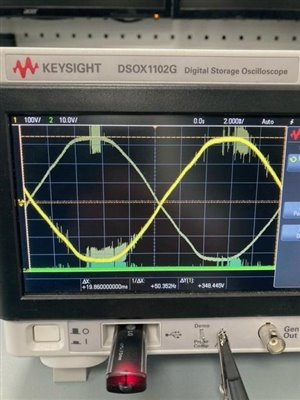Hi,
I'm new to the Forum but i'll try and explain this as best I can as it's a strange one!.. Sorry it's a long one!
The issue -
For several weeks now, there have been reports of multiple Monitors intermittently switching off and on again across 5 or 6 different PC users in an office of 20 PC users. Sometimes as little as twice a day but up to as often as15 times a day Apparently, this has led to multiple monitor leads no longer working and being replaced but the issue still remains.
The system -
Sub DB fed from Main DB on a TNCS system (The office is part of a larger factory / workshop set up). The circuit in question is a 32A Ring with a 30mA RCD up front, feeding 24 twin sockets in 4.0mm2 T+E. It is dedicated to office use only. Only 1 of the 2 earth connection points have been used on each socket outlet and no extra earth has been ran alongside it, so simply a ring main earth and that's it. It is a fairly new installation but the equipment has all been used before as the personnel have just moved all their stuff from an old office into a new one. There is an identical ring circuit feeding the other side of the room with the same set up but with no issues with their monitors reported (same monitors and fed from the same Board).
For the most part, monitors and PC's are plugged directly into the wall sockets but there are a few stations that are fed from 4 way extension leads. Problems are occurring on both set ups.
What's been tried / observed already -
Socket fronts dropped off, no N/E reversals and all connections tight. R1R2 = 0.05 ohms and insulation resistance test at the board = >999 Mohms so no issues across any combination of conductors.
Mis-leading -
I had a cheap and cheerful meter connected via Bluetooth that was sampling and logging every second, that picked up frequency spikes of up to 350Hz! I am now convinced that this is a banana skin and that the meter may have been suffering some communication interference (maybe caused by the same fault dropping the monitors out?!) as I later connected an Oscilloscope which did not show any fluctuation on 50 Hz. Thought i'd mention though just in case!
What the scope did pick up though, was a voltage on the exposed metal casing at the bottom of the monitor at the rear (Where the DVI ports etc are) that spiked whenever the monitor was turned off via the fault.
Here's where it gets weird.... The PC users, prior to my involvement had set up a 100w lamp (Bayonet type) to see if it would flicker when the monitors turned off (which is doesn't) but in actual fact, when you turn the lamp on and off, it would throw huge spikes onto this metal casing at the back of the monitor! I measured up to 100V on the scope! It would also turn the monitor OFF/ON. The lamp has no earth connection as it is all plastic housing.
When I plugged the lamp into the sockets on the other side of the room (Separate ring circuit) it did make a slight reading on the scope when probing the same part of somebody else's monitor but nothing like the amplitude I was getting on the problem circuit. More like 5V rather than 100V and no monitor issues either.
I can only assume that the RCD isn't tripping because it is such a fast spike! However that does surprise me that it would still damage a lead!?
I have turned off some of the Aircon unit circuits for as long as i've been able to as I wondered if a faulty inverter may be throwing something down the earth but it didn't seem to reduce the flickering.
So yeah.... Help!



